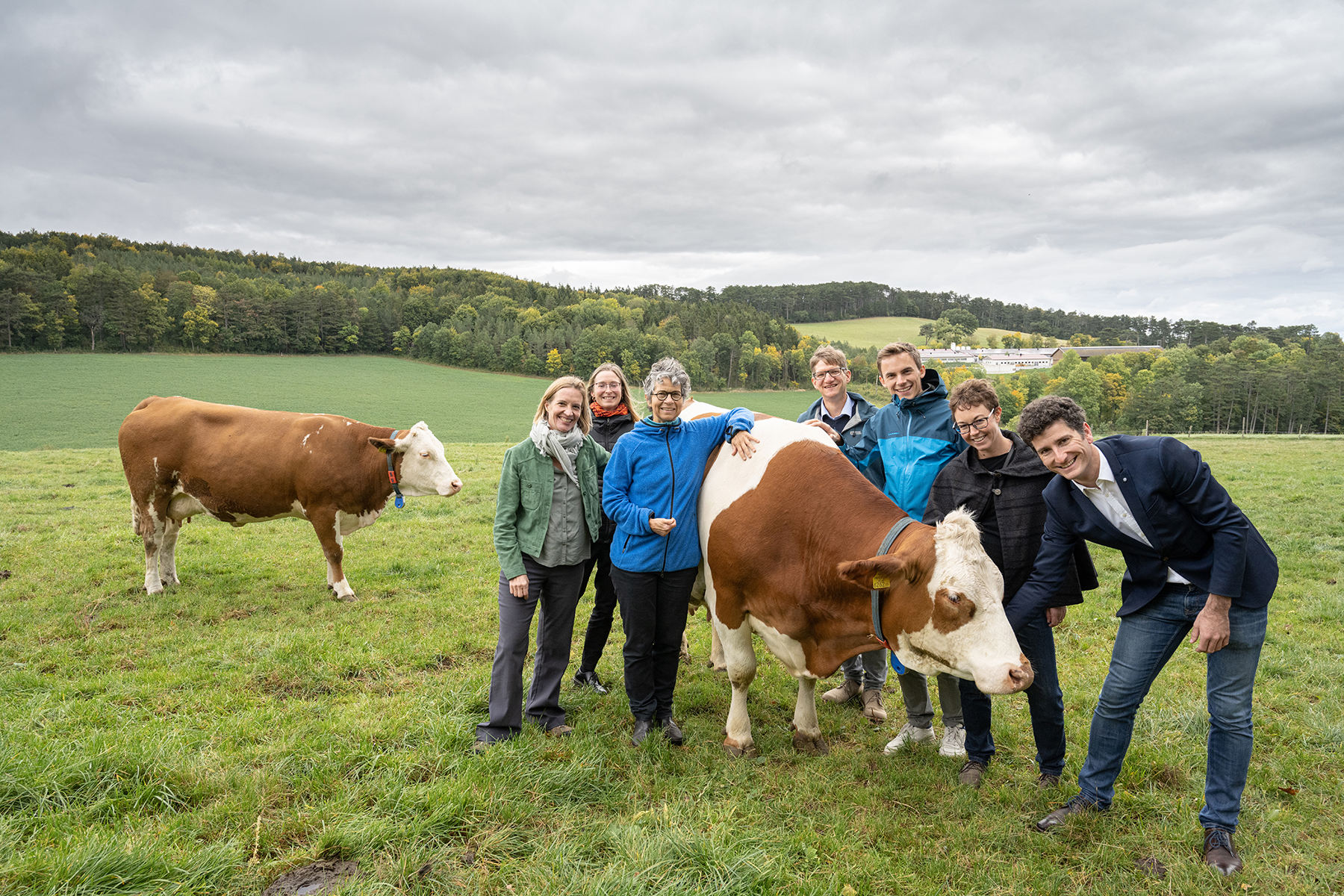
The production of meat, cheese and butter is energy-intensive and causes significantly more climate gases than the production of fruit and vegetables. In addition, agricultural land usage for animal feed is enormous. This in turn endangers biodiversity. Last but not least, reducing the consumption of milk and beef would also have a positive impact on public health. In other words, an increased plant-based diet would solve many problems. But the scenario of an entire society adhering to it is unlikely.
Supply chains for milk and beef unsustainable
“We humans can’t eat grass and cattle convert it into high-quality protein for us. But the question is how to shape production in the long term, says Professor Marianne Penker of the Institute for Sustainable Economic Development at the University of Natural Resources and Life Sciences in Vienna. “Because the European Union’s Green Deal makes it clear that the current supply chain for milk and beef is not sustainable.”
Above all, there is the challenge of limiting climate change and maintaining an intact cultural landscape with high biodiversity. At the same time, the consequences of climate change can no longer be ignored and the supply chain for milk and beef must be adapted. There is also a social mandate to ensure the healthy nutrition of the population and the welfare of farm animals and farming families.
The question is how to shape production in the long term. The European Union’s Green Deal makes it clear that the current food system is not sustainable.
Prof. Marianne Penker, BOKU Vienna, Austria
Different perceptions
There is consensus on the definition of the problem, but finding solutions is tough due to the different perceptions of the stakeholders. The interests of the individual stages in the supply chain have recently been made clear only by assigning blame. This has resulted in a blockade, which the COwLEARNING project aims to overcome by taking a holistic approach, according to Penker, a professor of sustainable development.
Also of interest: The Lely milking robot is a finalist for the European Inventor Award 2019
The project takes a holistic perspective. This means that environmental, economic and social interests in the supply chain for milk and beef are treated equally. This requires the collaboration of veterinarians and agricultural scientists with stakeholders from the field. To create a common knowledge base, representatives from all stages in the supply chain are involved – including consumer associations and the food service industry.
Joint learning processes
“Stakeholders see the pressure for change in their own areas and wonder why others aren’t changing. For example, farmers have already rebuilt their barns (note: in favor of animal welfare) and are now wondering what else consumers want. Things are changing so fast that farmers can’t keep up. But the various stages in the supply chain are also interdependent, which is why retailers are interested in how farmers will respond to consumer demands. What the dairies do also affects retailers, et cetera,” Penker explains.
Stakeholders see the pressure for change in their own area and wonder why others don’t change anything.
Prof. Marianne Penker, BOKU Vienna, Austria
To make the different positions understandable and create feasible transitional solutions, transdisciplinary methods and a serious game are used. The latter enables individual stakeholders to see the others’ perspective and thus produces learning effects.
Holistic sustainability assessments
Plus, drivers of change in the beef industry will be identified as well as the inhibiting factors for the implementation of sustainable innovations. The latter will be investigated in terms of animal, human and environmental welfare and socio-economic characteristics. Suitable novel production methods for milk and beef will be identified and scenarios developed to subject them to a holistic sustainability assessment – from farm to table.
Technical and social systems
Solutions will be found in a juxtaposition of technical and social systems, Penker says. One example is direct marketing, in which Austria is already far advanced. Another attractive model is cow-sharing, in which consumers can buy cow shares to enjoy milk or meat and also have a say in what happens to the cow. An example of cow-sharing can be found here.
The project came about during Penker’s last research stay in Japan, where there are similar approaches to rice harvesting. Here, city dwellers lease rice fields and contribute to the cultivation and harvesting of the land and are then rewarded with rice. A culture of urban agriculture has also been established in cities such as Tokyo and Nagoya. In a country that is constantly threatened by earthquakes, this is intended to ensure food supplies even in the event of a disaster. In addition, such community projects with volunteers also serve the social function of social exchange in the neighborhood.
Also interesting: Digitalization of Dairy Farming
